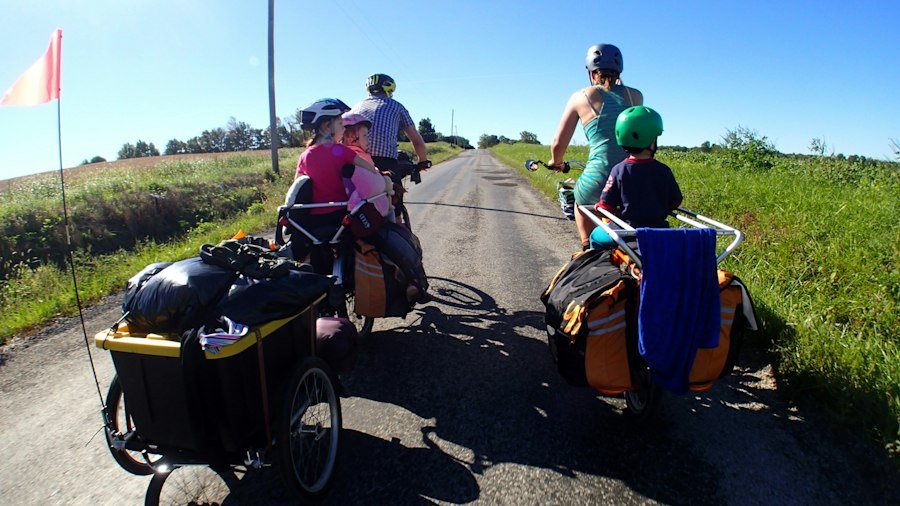

Norwegian for Parents: Kid-Friendly Phrases and Vocabulary in Norwegian
Norwegian is a North Germanic language spoken primarily in Norway. It is closely related to Danish and Swedish, and shares many similarities with these languages. Norwegian is the official language of Norway and is spoken by approximately 5 million people worldwide. While English is widely spoken in Norway, there are several reasons why parents should consider teaching their kids Norwegian.
Firstly, learning Norwegian can help children connect with their heritage and culture. If you have Norwegian ancestry or if you have family members who speak Norwegian, teaching your kids the language can help them feel a sense of belonging and strengthen their cultural identity. Additionally, learning Norwegian can open up opportunities for cultural exchange and travel. Norway is known for its stunning landscapes, rich history, and vibrant culture. By learning the language, children can fully immerse themselves in the Norwegian way of life and gain a deeper understanding of the country.
Table of Contents
ToggleKey Takeaways
- Teaching your kids Norwegian can help them connect with their heritage and culture.
- Learning Norwegian can also open up opportunities for travel and work in Norway.
- Basic Norwegian phrases for parents include “hei” for hello and “takk” for thank you.
- Vocabulary for everyday conversations includes words for food, clothing, and transportation.
- Greetings and polite expressions include “ha det bra” for goodbye and “unnskyld” for excuse me.
Benefits of Teaching Your Kids Norwegian
There are numerous advantages to raising bilingual children. Research has shown that being bilingual can enhance cognitive skills such as problem-solving, multitasking, and creativity. Bilingual children also tend to have better communication skills and are more adaptable to new situations. Learning Norwegian can also provide career and academic advantages. Norway has a strong economy and offers many job opportunities for those who speak the language. In addition, knowing Norwegian can be beneficial for academic pursuits such as studying abroad or pursuing higher education in Norway.
Basic Norwegian Phrases for Parents
To get started with teaching your kids Norwegian, it’s helpful to learn some basic phrases for everyday communication. Here are a few common phrases:
– Hello: Hei (pronounced “hey”)
– Goodbye: Ha det (pronounced “hah deh”)
– Thank you: Takk (pronounced “tahk”)
– Please: Vær så snill (pronounced “vair soh snill”)
– Sorry: Unnskyld (pronounced “oon-skuld”)
When pronouncing Norwegian words, it’s important to note that the letters “j” and “g” are pronounced like the English “y” and “g” in “go,” respectively. The letter “r” is rolled, similar to the Spanish “r.” To practice pronunciation, try saying these phrases out loud and listening to native speakers for guidance.
Vocabulary for Everyday Conversations
Building vocabulary is an essential part of learning any language. Here are some words and phrases for everyday conversations in Norwegian:
– Food: mat (pronounced “maht”)
– Clothing: klær (pronounced “klair”)
– Transportation: transport (pronounced “transpohrt”)
– Home: hjem (pronounced “yem”)
– School: skole (pronounced “skoh-leh”)
– Outdoors: utendørs (pronounced “oo-ten-dohrs”)
To make learning vocabulary more interactive, you can create flashcards with pictures and words, play memory games, or label objects around the house with their Norwegian names.
Greetings and Polite Expressions
Knowing how to greet others and express politeness is important in any language. Here are some common greetings and polite expressions in Norwegian:
– Good morning: God morgen (pronounced “goh mohr-gen”)
– Good evening: God kveld (pronounced “goh kvehl”)
– How are you?: Hvordan har du det? (pronounced “vohr-dahn hahr doo deh?”)
– I’m sorry: Jeg beklager (pronounced “yay beh-kla-ger”)
– Excuse me: Unnskyld meg (pronounced “oon-skuld may”)
It’s interesting to note that Norwegians tend to be more reserved when it comes to physical contact and personal space. Handshakes are common when meeting someone for the first time, but hugs and kisses on the cheek are less common. Role-playing exercises can be a fun way to practice greetings and polite expressions with your kids.
Numbers, Colors, and Shapes in Norwegian

Learning numbers, colors, and shapes is a fundamental part of language learning. Here are some basic words in Norwegian:
– Numbers: en (1), to (2), tre (3), fire (4), fem (5), seks (6), syv (7), åtte (8), ni (9), ti (10)
– Colors: rød (red), blå (blue), gul (yellow), grønn (green), svart (black), hvit (white)
– Shapes: sirkel (circle), firkant (square), trekant (triangle), rektangel (rectangle)
To make learning numbers, colors, and shapes more engaging, you can play games such as “I Spy” or create art projects that involve identifying and naming different colors and shapes.
Fun Activities to Teach Your Kids Norwegian
Learning a language should be fun and enjoyable. Here are some activities that can make learning Norwegian more engaging for kids:
– Singing songs and rhymes in Norwegian: There are many popular Norwegian children’s songs and rhymes that can be found online. Singing along to these songs can help children learn new vocabulary and improve pronunciation.
– Watching Norwegian movies and TV shows: Exposing children to Norwegian media can help them become familiar with the language and culture. Look for age-appropriate movies or TV shows with subtitles in Norwegian.
– Cooking Norwegian food together: Cooking traditional Norwegian dishes with your kids can be a fun way to learn about the culture and practice vocabulary related to food.
– Playing games in Norwegian: Incorporate Norwegian into games such as “Simon Says” or “I Spy” to make language learning more interactive.
Common Norwegian Words and Phrases for Kids
When teaching Norwegian to kids, it’s important to focus on vocabulary that is relevant and interesting to them. Here are some common words and phrases for kids:
– Animals: hund (dog), katt (cat), fugl (bird), fisk (fish)
– Toys: leke (toy), dukke (doll), bil (car), ball (ball)
– Hobbies: tegne (draw), lese (read), danse (dance), synge (sing)
To reinforce learning, you can create flashcards, play memory games, or use interactive language learning apps that are designed for kids.
Norwegian Children’s Songs and Rhymes
Singing songs and rhymes is a fun way for kids to learn a new language. Here are some popular Norwegian songs and rhymes for kids:
– “Bæ bæ lille lam” (“Baa Baa Black Sheep”)
– “Lille Petter Edderkopp” (“Itsy Bitsy Spider”)
– “Ro, ro til fiskeskjær” (“Row, Row, Row Your Boat”)
You can find the lyrics and translations of these songs online, as well as sing-along videos and audio recordings.
Resources for Learning Norwegian as a Family
There are several resources available for families who want to learn Norwegian together:
– Online courses and apps: Websites such as Duolingo and Babbel offer interactive language courses for beginners. There are also apps specifically designed for learning Norwegian, such as Memrise and Drops.
– Norwegian language schools and tutors: If you prefer a more structured approach, you can enroll your family in a Norwegian language school or hire a private tutor.
– Norwegian cultural events and festivals: Attending Norwegian cultural events and festivals in your area can provide opportunities for language practice and cultural immersion.
– Creating a language-rich environment at home: Surrounding your family with Norwegian books, music, and movies can help create a language-rich environment at home.
Teaching your kids Norwegian can have numerous benefits, from enhancing cognitive skills to providing career and academic advantages. By learning the language, children can connect with their heritage, open up opportunities for cultural exchange and travel, and gain a deeper understanding of the Norwegian culture. With the resources and activities mentioned in this article, parents can start teaching their kids Norwegian in a fun and engaging way. So why not embark on this language-learning journey as a family and explore the beauty of the Norwegian language together?
If you want to learn Norwegian, you can register for classes here. We look forward to hearing from you and helping you become fluent in Norwegian.





